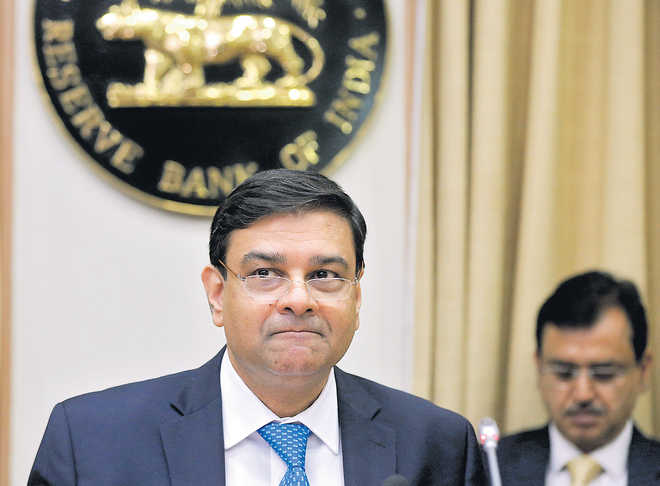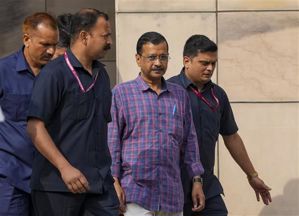
HOW MUCH?: The debate this time is on the quantum of rate cut the RBI chief will announce on Wednesday.
Mythili Bhusnurmath
All eyes are on the Reserve Bank of India’s (RBI) Monetary Policy Committee (MPC) as it meets to review the bank's monetary policy stance. Expectations are running high that the MPC will finally relax its overly cautious stance and cut interest rates on August 2. Indeed, the discussion in most circles is not on whether or not the bank will cut its policy or repo rate (which is the rate at which it infuses liquidity into the system). Rather it is on the quantum of the rate cut: will it settle for a 25 basis points cut (a basis points is one-hundredth of a percentage point) or will it take courage in its hands, surprise markets and go in for a 50 basis points cut?
Sure, it would be quite out of character for the normally conservative RBI to go in for an aggressive rate cut! More so since it is now officially an inflation targeter and a sharp reduction in interest rates could send demand, and prices, spiralling! But the bank has come a long way from the days when it seemed to be fighting a losing battle against inflation!
Rewind to August 2013. Inflation was hovering at close to double-digits, GDP growth had slowed to 5.5% in 2012-13, the rupee was falling rapidly following the then US Federal Reserve Chairman, Ben Bernanke's hint that the Fed might end its easy monetary stance. Overseas investors could not get out of the country fast enough and as the rupee touched a historic low of Rs 68.85 to the dollar on August 28, 2013, the picture looked grim.
Fast forward to today. Far from depreciating, the rupee has been going from strength to strength. At Rs 64.33 to the dollar on the last Friday of July 2017, it is now over-valued in the RBI's own reckoning (read ripe for a fall). Yet overseas investors seem quite oblivious of the danger. In July 2017 alone, we've seen an inflow of $2.4 billion in portfolio flows, taking the total for the year to date close to $25 billion.
So what has changed? On the face of it, everything! On the political front, we have a single-party majority government firmly in the saddle at the Centre. On the economic front, the country's macroeconomic fundamentals are in much better shape. The current account deficit is less than one per cent, down from 4.8% in August 2013; inflation is down to 1.54%, well below, not only the average of 10% consumer price inflation between 2008 and 2013 but also below the lower end of the inflation target of 2-6% set by the government under the New Monetary Policy Framework and Related Inflation Targeting regime; the fiscal deficit is at 3.5% (2016-17), down from 5.8% in 2012-13 and stock market indices have gone through the roof, with the NSE's Nifty 50 crossing the 10,000 mark for the first time in history.
The only fly in the ointment is the growth rate that stubbornly refuses to pick up despite an improvement in other macro fundamentals. The country's gross domestic product (GDP) grew just 6.1% in the period January-March 2017. Worse, the ratio of gross fixed capital formation to GDP, which is a measure of investment and hence key to future growth, has fallen rather than increased.
Against this background, the MPC has the difficult task of weighing the pros and cons of a rate cut, knowing full well that it could well be a case of “damned if it does and damned if it doesn't”! Take the arguments for a rate cut.
One, at 6.25% the benchmark policy rate or repo rate is the same as when inflation was hovering at over 10%, as against the latest reading of 1.54%. This puts the real interest rate, loosely defined as nominal interest rate less inflation, at over 4%, which is not only well above the RBI's own preferred real interest rate of 1.5-2%, but also close to the highest real interest rate in the world.
Two, despite the payout to government employees under the Seventh Pay Commission, demand has not picked up significantly. Capacity utilisation remains low and pricing power of manufacturers, weak.
Three, the rain gods have been kind to us, so food prices, which have always been not only volatile but also have the potential to skew consumer price inflation dramatically, are unlikely to play a spoilsport.
Four, global commodity prices, particularly oil prices, also seem benign.
Five, private corporate investment remains comatose. A reduction in interest rates that makes investment avenues more attractive could revive animal spirits and lead to a pickup in investment.
There are arguments against a rate cut. On the flip side we have the old familiar fears. One, the US Federal Reserve, whose actions have an enormous bearing on global capital flows, is poised to raise interest rates again before the end of the year. It is also likely to begin contracting the size of its bloated balance sheet (read tighten monetary policy) “relatively soon” in the words of its Chairman, Janet Yellen. Both these actions could lead to an outflow of dollars from emerging market economies, including India. At such a time, a reduction in interest rates could reduce the attractiveness of our markets even further. Remember, the bulk of the inflow in recent months has come into debt markets, riding on higher interest rates here.
Two, the full impact of the higher housing allowance paid out in terms of the Pay Commission recommendations has not played out as yet. So we could see a surge in demand in the months ahead.
Three, though GST (goods and services tax) has not resulted in a sharp increase in prices so far, it is still early days yet. The reality is that the tax rate on services is up close to 4% and this is bound to increase prices of almost all services across the board. (This may not get reflected in the price index given the relatively low weight of services in the consumption basket used to compute consumer price inflation).
Four, stock markets look hugely over-valued. Any reduction in interest rates could send markets up further, increasing the gap between markets and the real economy.
Five, a rate cut is unlikely to incentivise corporates to borrow when they are already struggling under the weight of loans taken earlier. Nor will it incentivise banks to lend when they are struggling under the weight of non-performing assets.
So, on paper, the MPC still has as many reasons to cut as to maintain the status quo on rates. It must, therefore, make an informed judgement of the balance of risks. And here the reality is that while a rate cut alone is unlikely to do much good (read, stimulate investment), it is far less likely to do any harm (read, lead to breaching the inflation band). In such a scenario, the balance of judgement must favour a rate cut. By how much, we'll know today!
— The writer is an economist and former central banker



























